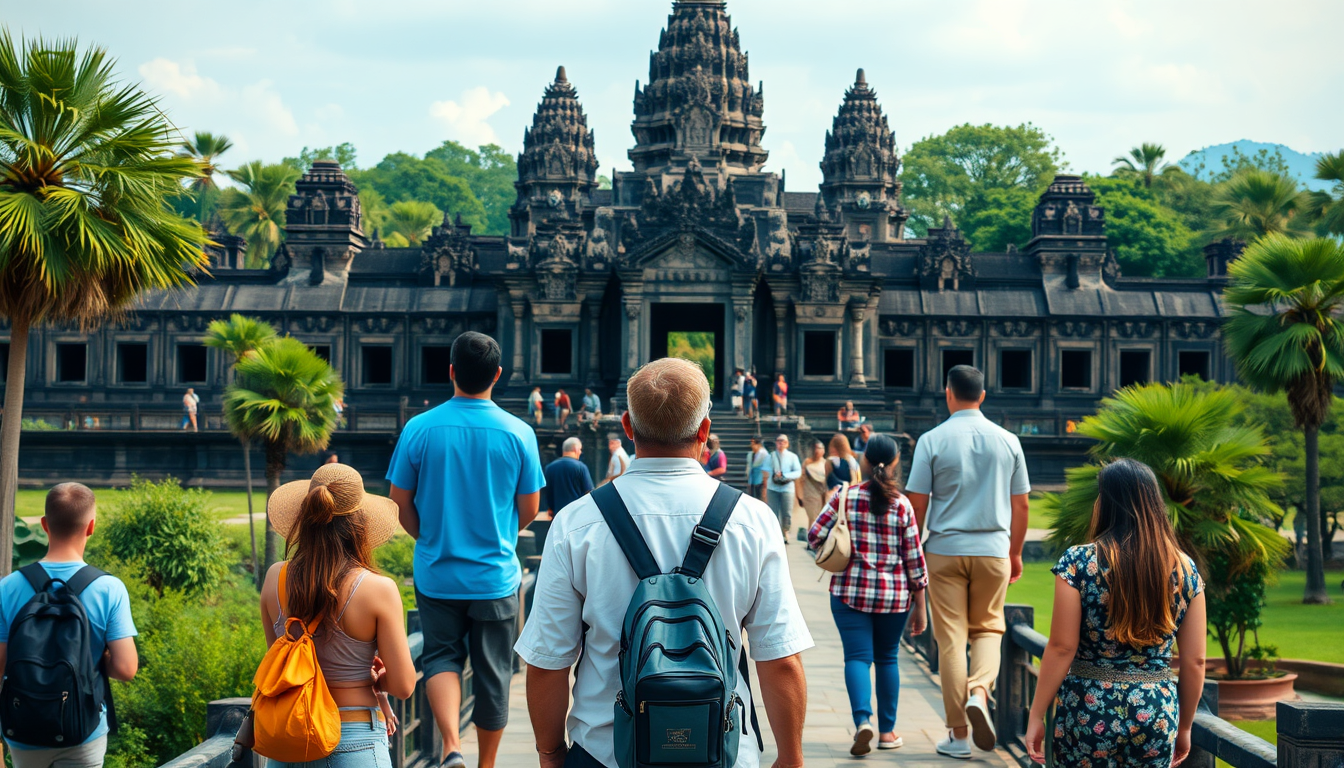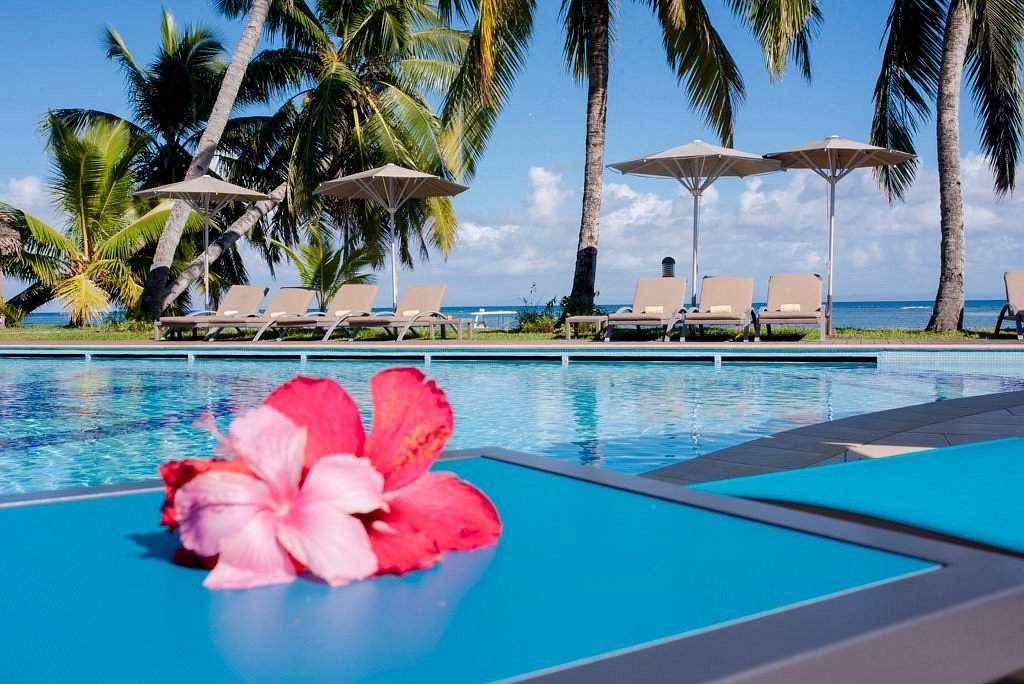Cultural landmarks are more than just beautiful places—they’re living stories etched into stone, wood, and memory.
From ancient temples in Southeast Asia to colonial cities in the Caribbean, each site reveals the soul of its region.
These destinations invite you to walk through history, connect with tradition, and witness the legacy of generations past.
Whether you’re drawn to sacred shrines, royal palaces, or vibrant street art, every landmark offers a unique emotional journey.
Let this guide lead you through the most unforgettable cultural experiences across Asia, Central America, and the islands of the Caribbean.
Thailand’s Iconic Temples and Monuments
Thailand is known for its rich cultural history and striking temples that tell stories of its past.
A must-visit for anyone exploring the country’s cultural landmarks is the Grand Palace in Bangkok, a sprawling complex that houses the sacred Temple of the Emerald Buddha.
This royal residence represents Thailand’s unique blend of history, culture, and religion, making it one of the country’s most important cultural landmarks.
The Grand Palace offers an array of temples and halls to explore, each beautifully adorned with intricate details, murals, and statues.
Another essential stop is the Ancient City of Ayutthaya, a UNESCO World Heritage site, where you’ll find the ruins of temples and palaces that date back to the Kingdom of Ayutthaya, which was founded in 1350 and became one of Southeast Asia’s most prosperous civilizations.
Visitors can walk among the remnants of Wat Mahathat, Wat Phra Si Sanphet, and other temples that stand as a testament to Thailand’s ancient capital.
Exploring the serene remains of this city offers a unique insight into Thailand’s cultural history.
If you’re looking to experience something less well-known but equally enchanting, Wat Pho in Bangkok, home to the famous Reclining Buddha, is another must-see.
This temple is also considered the birthplace of traditional Thai massage, making it not only a spiritual site but a place to engage with Thailand’s rich healing traditions.
Indonesia’s Temples and Unique Heritage
Indonesia is home to an incredibly diverse cultural landscape, shaped by its vast number of islands, ethnic groups, and religions.
One of the most famous cultural landmarks in Indonesia is the Borobudur Temple in Java.
As the largest Buddhist temple in the world, this massive monument is adorned with intricate reliefs and statues.
It is one of the greatest cultural landmarks in Southeast Asia and a key example of Indonesia’s Buddhist heritage.
Borobudur offers visitors a truly awe-inspiring experience, with its reliefs narrating Buddhist teachings and its panoramic views from the summit.
Another must-see is Prambanan Temple, an impressive Hindu temple complex located in central Java.
With towering spires and detailed carvings, Prambanan represents the spiritual legacy of Indonesia’s Hindu past.
It’s a UNESCO World Heritage site and offers an excellent way to experience the cultural landmarks of the region.
The temples here are dedicated to the gods Shiva, Vishnu, and Brahma, and the complex is known for its large bas-reliefs that tell the story of the Ramayana.
For a more remote yet equally stunning site, Tana Toraja in Sulawesi features unique burial traditions and elaborate funeral ceremonies.
The landscape is dotted with traditional Tongkonan houses, which have distinctive boat-shaped roofs, making the region a fascinating cultural landmark.
Cambodia’s Ancient Temples of Angkor
No visit to Cambodia is complete without exploring the awe-inspiring Angkor Archaeological Park.
The temple complex is one of the most significant cultural landmarks in Southeast Asia and includes iconic structures like Angkor Wat, the world’s largest religious monument, and the Bayon Temple, with its enigmatic stone faces.
Each temple in the Angkor complex is a work of art, showcasing intricate carvings, massive stone structures, and a glimpse into Cambodia’s rich Khmer history.
Angkor Wat alone covers more than 162 hectares and is dedicated to the Hindu god Vishnu, later transforming into a Buddhist temple.
Aside from Angkor Wat, another must-visit site in Cambodia is Ta Prohm, the “Tomb Raider” temple, which has been embraced by nature with trees growing out of the stone.
It’s an enchanting testament to how nature and history can blend together, making it one of Cambodia’s most photographed and celebrated cultural landmarks.
Phnom Penh, Cambodia’s capital, also features several other important cultural landmarks, including The Royal Palace and the Silver Pagoda, where you can observe the Cambodian monarchy’s grandeur and spiritual practices.
The Killing Fields, while sobering, is also a vital cultural landmark to understand the more recent history of Cambodia, representing the country’s struggle during the Khmer Rouge era.
Japan’s Timeless Temples and Shrines
Japan seamlessly blends the ancient with the modern, and its cultural landmarks provide a glimpse into the country’s rich history.
One of Japan’s most iconic cultural landmarks is Kyoto’s Kinkaku-ji, also known as the Golden Pavilion.
This Zen Buddhist temple, covered in gold leaf, reflects its tranquil surroundings and is a beautiful example of Japan’s traditional culture.
The temple, set against a backdrop of lush greenery and ponds, offers a serene atmosphere that invites visitors to reflect and connect with Japan’s spiritual heritage.
Another must-visit in Kyoto is Fushimi Inari Taisha, famous for its thousands of vermilion torii gates that lead up the mountainside.
This sacred site dedicated to the Shinto god of rice and agriculture offers an unforgettable walking experience that combines spirituality with natural beauty.
It’s one of Japan’s most famous and photographed landmarks, providing a distinctive opportunity to experience both nature and religion.
In Tokyo, Senso-ji Temple, Japan’s oldest temple, offers a glimpse into the country’s spiritual practices.
The historic temple is surrounded by traditional markets, making it a perfect destination to experience both the cultural and commercial side of Japan.
The temple’s Kaminarimon Gate is an iconic structure that represents Tokyo’s rich history and its vibrant blend of tradition and modernity.
Taiwan’s Rich History and Architecture
Taiwan is home to many cultural landmarks that represent both its indigenous heritage and its Chinese influences.
A top destination is the National Palace Museum in Taipei, which houses one of the most significant collections of Chinese art and historical artifacts.
The museum is a must-visit for anyone interested in Taiwan’s long history and its cultural ties to China.
It offers everything from ancient pottery and sculptures to historical scrolls and paintings, providing an in-depth look into Chinese art and culture.
Another essential landmark is the Longshan Temple, a vibrant Buddhist temple in Taipei that reflects the deep spiritual practices of Taiwan.
Built in 1738, Longshan Temple is known for its elaborate carvings, incense-filled air, and the rituals that take place daily.
It’s a beautiful representation of Taiwan’s Buddhist culture, and its historical importance is reflected in the hundreds of thousands of visitors who come to pray and seek blessings.
Malaysia’s Diverse Cultural Heritage
Malaysia’s cultural landmarks offer a unique look into the country’s multicultural heritage.
The Batu Caves near Kuala Lumpur are an essential site for anyone exploring Malaysia’s religious landmarks.
These limestone caves house a Hindu temple and feature a 42-meter-tall statue of Lord Murugan, making it an impressive cultural landmark that attracts both pilgrims and tourists alike.
The climb to the caves is a popular activity, with 272 steps leading to the top and offering stunning views of the surrounding area.
Another significant site in Malaysia is George Town in Penang, a UNESCO World Heritage city known for its unique fusion of colonial architecture, Chinese temples, and street art.
The city’s well-preserved architecture and rich cultural diversity make it a fascinating place to explore the essence of Malaysia’s multicultural society.
Visitors can wander through narrow streets and alleys, experiencing a blend of Chinese, Malay, and European influences, all of which play a role in shaping the identity of this vibrant city.
Laos’ Spiritual Temples and Sacred Sites
Laos offers a serene and spiritual atmosphere, with temples and cultural landmarks that reflect the country’s Buddhist traditions.
That Luang Stupa in Vientiane is one of the most revered sites in Laos, symbolizing the Buddhist faith and the sovereignty of the country.
This golden stupa is a national symbol and a must-visit for anyone interested in Laos’ cultural heritage.
It is also the center of the country’s Buddhist activity, with pilgrims from all over Laos coming to worship.
Additionally, the ancient town of Luang Prabang is home to numerous monasteries, temples, and cultural landmarks that represent Laos’ traditional way of life.
The town, a UNESCO World Heritage site, is known for its blend of French colonial architecture and traditional Lao buildings.
The temples in Luang Prabang, such as Wat Xieng Thong, are some of the most impressive examples of Buddhist architecture in the country.
Vietnam’s Historic Sites and Ancient Traditions
Vietnam’s cultural landmarks are steeped in history and are a great way to experience the country’s evolution over centuries.
The Imperial City of Huế, once the capital of Vietnam, is a UNESCO World Heritage site that offers insight into the country’s imperial past.
The complex includes the Forbidden Purple City, where Vietnam’s emperors once lived and ruled, as well as temples, gardens, and royal tombs.
The Imperial City offers a glimpse into the lavish lifestyle of the royal family and the intricate artistry of Vietnamese architecture.
Another must-visit site is My Son Sanctuary, an ancient Hindu temple complex in central Vietnam.
It offers a glimpse into the Cham civilization and is one of the most important cultural landmarks in Vietnam.
The site features towering stone structures and intricate carvings that highlight the Cham culture’s sophisticated artistry and spiritual beliefs.
Madagascar’s Unique Natural and Cultural Landmarks
Madagascar is a world apart in terms of both its natural wonders and cultural landmarks.
A top cultural site in Madagascar is the Royal Hill of Ambohimanga, a UNESCO World Heritage site and former royal capital.
The site includes a palace, royal tombs, and sacred forests, all offering insights into the history and traditions of the Malagasy people.
It’s an important landmark for understanding Madagascar’s royal heritage and its indigenous cultural practices.
Another important landmark is the Avenue of the Baobabs, where towering baobab trees create a stunning natural landscape that is deeply tied to Madagascar’s cultural identity and history.
The baobabs have become an iconic symbol of Madagascar, and their presence in the landscape tells a story of both natural beauty and cultural significance.
Central America and the Caribbean’s Cultural Gems
The Caribbean and Central America are home to vibrant cultures and breathtaking landmarks that reflect the rich history and diversity of the region.
In Belize, Caracol is an ancient Maya city with impressive ruins that give a glimpse into the past grandeur of the Maya civilization.
The site features towering pyramids, palaces, and ceremonial structures that reflect the architectural expertise of the Maya people.
Panama’s Canal is not only a feat of engineering but also a significant cultural landmark that connects the Atlantic and Pacific Oceans.
It’s a must-see for anyone interested in the country’s history and its role in global trade.
The canal is one of the most impressive man-made structures in the world, and visiting it offers an opportunity to learn about Panama’s role in shaping modern global commerce.
Playa del Carmen, Puerto Vallarta, Tulum, and Cozumel are all cultural hotspots on the Caribbean coast of Mexico.
Tulum, in particular, boasts Mayan ruins that sit atop cliffs overlooking the sea, providing a blend of history and natural beauty.
These ancient Mayan structures are a testament to the region’s rich cultural heritage and are perfect for visitors wanting to immerse themselves in both nature and history.
The Caribbean Islands: Saint Martin, Barbados, Grand Cayman, and Beyond
The Caribbean islands offer a wealth of cultural landmarks that reflect the region’s colonial past and Afro-Caribbean heritage.
Saint Martin/Sint Maarten is known for its blend of French and Dutch cultures, with historic forts and colonial-era buildings.
The island’s cultural heritage is also reflected in its food, music, and art, providing a full sensory experience for visitors.
Barbados boasts Bridgetown, a UNESCO World Heritage city with charming colonial buildings, and the Garrison Historic Area, a reminder of the island’s British military history.
Visitors can learn about the island’s colonial past while also engaging with its lively culture through its annual festivals and events.
The Cayman Islands offer Pedro St. James Castle, a landmark that represents the islands’ historical significance, as it was the site of the island’s first official assembly.
The castle offers both a glimpse into Caymanian history and a beautiful view of the Caribbean Sea.
St. Lucia, Jamaica, Honduras, and Dominica all offer unique cultural landmarks that celebrate the vibrant history of the Caribbean.
From Jamaica’s Bob Marley Museum to Dominica’s Kalinago Territory, these islands offer a deep dive into the indigenous and colonial cultures that shaped them.
Embrace the Culture and History of Your Next Destination
The cultural landmarks in Thailand, Indonesia, Cambodia, Japan, Taiwan, Malaysia, Laos, Vietnam, Madagascar, Belize, Panama, and the Caribbean islands are an essential part of what makes these destinations special.
By visiting these sites, you’ll gain a deeper understanding of the destination culture, the traditions that have shaped it, and the history that still echoes today.
Experiencing Culture Beyond the Landmarks
Whether it’s the intricate temples of Southeast Asia, the ancient ruins of Central America, or the colonial history of the Caribbean, each of these cultural landmarks offers a gateway into the past.
They help travelers connect to the soul of the region, offering a chance to see history through architecture, art, and preserved monuments.
In every corner of the globe, cultural landmarks tell stories that transcend time.
Embrace these historic treasures, and you’ll be rewarded with memories that last a lifetime.
So, when planning your next adventure, make sure to include these must-visit cultural landmarks in your itinerary.
They’re not just sites to see—they’re experiences to be lived.
FAQ – Unlock Deeper Travel Experiences Through Cultural Landmarks
Which cultural landmarks in Southeast Asia offer the most immersive experiences?
Angkor Wat in Cambodia, Borobudur in Indonesia, and the Grand Palace in Thailand each unlock centuries of spiritual and architectural heritage.
These sites offer emotional depth through sacred rituals, ancient carvings, and preserved ruins that connect travelers to regional identity.
Exploring these landmarks supports a richer understanding of Southeast Asia’s religious and historical legacy.What Caribbean landmarks reveal the region’s cultural diversity?
Bridgetown in Barbados, Pedro St. James Castle in Grand Cayman, and the Bob Marley Museum in Jamaica highlight colonial, Afro-Caribbean, and musical heritage.
Each landmark reflects the island’s unique blend of history, resistance, and celebration.
Visiting these sites helps travelers connect with the soul of Caribbean culture.Are there cultural landmarks in Central America that rival ancient sites elsewhere?
Yes—Caracol in Belize and the Panama Canal offer powerful contrasts between ancient Maya civilization and modern global infrastructure.
Caracol’s pyramids and ceremonial plazas showcase architectural mastery and spiritual depth.
The Panama Canal reveals the region’s pivotal role in shaping global commerce and engineering history.What makes a landmark culturally significant?
Cultural significance stems from historical relevance, architectural uniqueness, and its role in shaping local identity.
UNESCO designation often signals global importance, but emotional resonance and community value matter just as much.
Landmarks become meaningful when they preserve stories, rituals, and traditions that define a place.How can I plan a trip that prioritizes cultural immersion?
Use multi-stop itinerary tools like TravelUp or Kiwi to streamline route planning.
Prioritize UNESCO sites, local festivals, and diverse regions to maximize cultural exposure.
Planning around landmark clusters supports deeper engagement and emotional connection to each destination.








